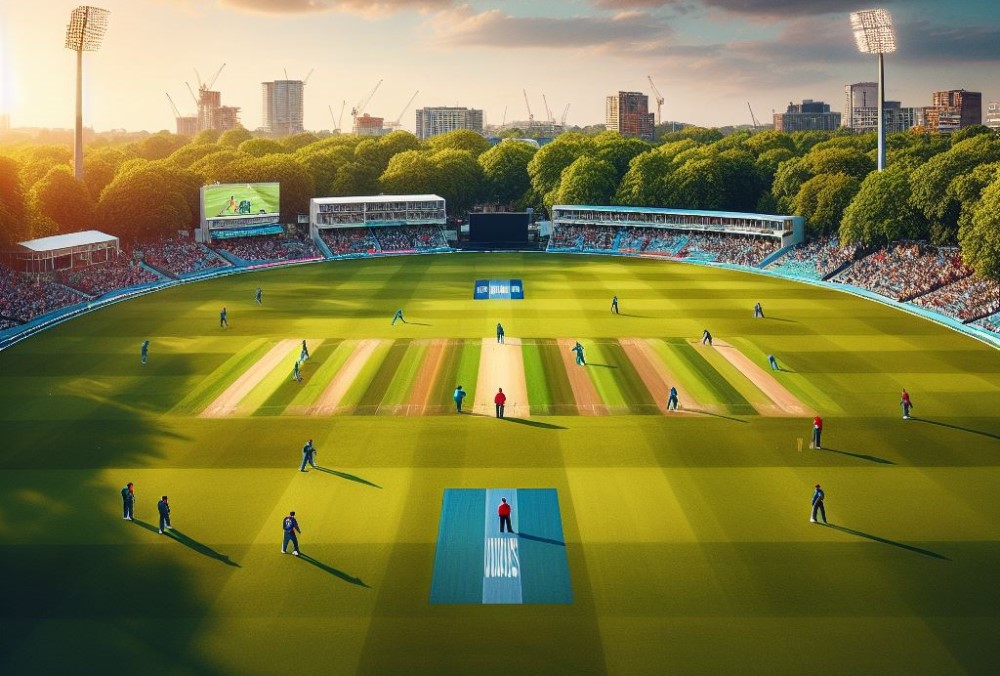
How Long Does A Typical Test Match Last
In the world of cricket, the Test match stands as the pinnacle of the sport, a timeless battle that unfolds over days rather than hours, testing the endurance, skill, and strategy of teams. For enthusiasts and novices alike, the question often arises: How long does a typical Test match last?
The answer lies in the unique format of Test cricket, a game that defies the brevity of its shorter counterparts, offering a captivating narrative that unfolds over an extended duration.
Unlike the limited-overs formats, a Test match is a marathon, spanning a maximum of five days, with each day comprising three sessions of play. This elongated timeframe allows for the ebb and flow of the game, providing teams the opportunity to recover from setbacks, formulate new strategies, and showcase a range of cricketing skills.
The duration of a Test match is not fixed; rather, it hinges on various factors such as the pace of play, the nature of the pitch, and, of course, the weather conditions. While some Test matches conclude within four days, others may extend the full five-day duration.
However, the beauty of Test cricket lies not just in the final result but in the narratives that unfold over the course of the game—the gripping partnerships, the strategic declarations, and the tactical maneuvers that add layers to the contest.
Understanding the dynamics of a Test match requires an appreciation for the strategic elements that come into play. Teams must balance the need to accumulate runs with the imperative of taking wickets, making decisions on declarations and setting challenging targets for their opponents.
The elongated format allows for the strategic subtleties to manifest gradually, providing a canvas for the cricketing saga to unfold.
While the prolonged duration of a Test match might seem daunting to those accustomed to the swift pace of shorter formats, it is precisely this time span that elevates Test cricket to an art form. The ephemerality of a T20 or One Day International is replaced by the strategic depth and nuance that characterize the longer version of the game.
Understanding Test Matches
Test matches are a form of cricket that can last for up to five days, making them the longest format of the sport. These matches require a deeper understanding of the game compared to shorter formats, as they offer strategic challenges that can test a player’s skills and endurance.
Test matches consist of two innings per team, allowing each side ample time to bat and bowl. The objective is to score more runs than the opposition.
To illustrate the intricacies of test matches and highlight the importance of understanding them, let me share a true story of a thrilling encounter that went down to the wire.
What is the Duration of a Test Match?
A typical Test match, the longest format in cricket, usually lasts for five days. Each day consists of three playing sessions, with breaks for lunch and tea. The duration of a Test match allows for a thorough examination of players’ skills and endurance, as well as strategic decision-making by captains.
What is the Duration of a Test Match? There have been some exceptional Test matches that have extended beyond the scheduled five days.
One such historic example is the match between South Africa and England in 1939, known as the “Timeless Test,” which lasted for a record-breaking nine days due to rain interruptions.
Does the Duration Vary in Different Formats of Cricket?
The duration of a Test match can vary depending on the format of cricket being played.
- Traditional Test Match: 5 days
- Day-Night Test Match: 4 days
- T20 International: Around 3 hours
- One Day International (ODI): Around 8 hours
Historically, the longest Test match was played between Australia and England in 1939, lasting for a staggering 10 days. On the other hand, the shortest Test match occurred between England and Australia in 1887, finishing within a single day. These variations highlight the unique nature and diverse formats of cricket.
Factors Influencing the Length of a Test Match

When it comes to the length of a test match, several factors come into play. In this section, we’ll dive into the key elements that influence the duration of a test match.
From the number of innings played to the performance of both the batting and bowling teams, and even the impact of weather and pitch conditions, all these factors intertwine to shape the length of this revered form of cricket.
So, let’s explore how these variables can affect the overall duration of a thrilling test match.
Number of Innings Played
The “number of innings played” is a critical factor in determining the duration of a Test match. Here are some important points to consider:
- A Test match consists of two innings for each team.
- If both teams bat for a significant amount of time in their innings, it can potentially prolong the match.
- In the case of a high scoring match with long batting periods, the duration can be extended.
- On the other hand, if teams experience quick batting collapses or manage to bowl out the opposing team early, the match can conclude in a shorter timeframe.
Considering the “number of innings played” can provide valuable insights into the potential length of a Test match. It is worth noting that various other factors, such as weather and pitch conditions, also influence the duration.
Batting and Bowling Performance
The batting and bowling performance of teams and players greatly impacts the outcome of a Test match. Here is a
table that highlights the top performers in Test cricket history:
| Player | Batting Average | Bowling Average |
| Sir Don Bradman | 99.94 | N/A |
| Muttiah Muralitharan | 22.72 | 22.72 |
| Shane Warne | 35.40 | 25.41 |
| Jacques Kallis | 55.37 | 32.65 |
| Sachin Tendulkar | 53.78 | N/A |
Weather Conditions
Weather conditions have a significant impact on the duration of a Test match in cricket.
- Rainy: Delays play, interrupts gameplay, and can result in the match being extended to make up for lost time.
- Sunny: Allows uninterrupted play and increases the chances of completing the Test match within the scheduled time.
- Hot: May lead to slower over rates and increased breaks due to players needing to hydrate and take additional precautions.
- Windy: Can impact the movement of the ball and alter the gameplay, potentially extending the duration of the Test match.
Pitch Conditions
Pitch conditions play a crucial role in the duration and outcome of a test match. These conditions greatly affect the behavior of the ball, which in turn influences the strategies used by both the batting and bowling teams.
- Dry and Cracked: Offer uneven bounce and assist spin bowlers, making it challenging for batsmen.
- Green and Damp: Provide assistance to fast bowlers due to moisture in the pitch, making it difficult for batsmen.
- Flat and Dry: Offer little to no assistance to bowlers, making it easier for batsmen to score runs.
- Worn and Rough: Favor spin bowlers as the ball grips the surface, causing unpredictable turn.
Understanding the pitch conditions is crucial for teams to make informed decisions about team selection, game plans, and strategies.
Longest Test Matches in History
Get ready to dive into the thrilling world of Test cricket history! In this section, we’ll explore some of the longest matches ever played, packed with suspense, determination, and incredible records.
From the intense Australia vs. England clash in 1939 to the unforgettable showdown between South Africa and England in the same year, and the legendary West Indies vs. England match in 1930 – each sub-section holds its own captivating story.
Brace yourselves for mind-boggling facts, nail-biting moments, and astonishing displays of skill and endurance. Let’s unravel the epic tales of these iconic Test matches!
Australia vs. England, 1939
Australia vs. England in 1939 witnessed one of the longest test matches in cricket history, spanning ten days. The match was played at The Oval in London and ended in a draw.
Both teams displayed exceptional batting and bowling performances, making it a closely contested battle. The weather conditions throughout the match were favorable, allowing uninterrupted play.
The pitch conditions also played a significant role in the duration of the match, as it remained suitable for batting throughout.
This legendary test match is remembered for its endurance and the resilience displayed by both teams.
- Match: Australia vs. England
- Year: 1939
- Duration: 10 days
- Result: Draw
- Venue: The Oval, London
South Africa vs. England, 1939
During the 1939 Test match between South Africa and England, the match lasted for a total of 12 days. This was one of the longest Test matches in history. Both teams showed exceptional skills and determination throughout the match. The match was played with great intensity and displayed the true spirit of the game.
- Match: South Africa vs. England
- Year: 1939
- Duration: 12 days
West Indies vs. England, 1930
The West Indies vs. England Test match held in 1930 was a significant event in cricket history. It was a closely fought battle between the two teams, with memorable performances from players like George Headley and George Challenor.
The match lasted for a total of 10 days, making it one of the longest Test matches ever played. It showcased the resilience and determination of both teams and remains an important milestone in the sport.
The match is often remembered for its thrilling moments and the high level of competition between the West Indies and England teams of that era.
Shortest Test Matches in History

Discover the exhilarating moments when the cricket world was left astounded by the brevity of Test matches.
From the historic clash between England and Australia in 1887 to Australia’s face-off against South Africa in 1932, and England’s encounter with the West Indies in 2000, brace yourself for stories of astonishingly short Test matches that will leave you in awe.
Prepare to be amazed as we dive into the captivating realm of the shortest Test matches in history.
England vs. Australia, 1887
In the Test match between England and Australia in the year 1887, the match lasted for just 1 day, making it one of the shortest Test matches in history. The quick conclusion of the match was due to Australia’s dominant performance, winning by 45 runs.
This match, which took place in 1887, is notable for its brevity and serves as a reminder of how Test matches can vary in length. Several factors influence the duration of a Test match, including the number of innings played, batting and bowling performance, weather conditions, and pitch conditions.
While this particular match was brief, Test matches typically last for five days, offering players ample time to showcase their skills and strategize.
Australia vs. South Africa, 1932
The Australia vs. South Africa Test match in 1932 holds the record for being one of the shortest Test matches in history. It lasted for only 108 minutes, with South Africa winning by an innings and 157 runs.
This match was part of the infamous “Bodyline” series, where England used aggressive tactics to counter the batting prowess of Australian legend Don Bradman.
Australia’s poor performance led to a quick defeat against South Africa. Despite its short duration, this match is still remembered for the intense rivalry and controversial tactics employed on the field.
England vs. West Indies, 2000
In the Test match between England and West Indies in the year 2000, England emerged victorious in just two days, making this match stand out as one of the shortest Test matches in history. The match concluded early due to the exceptional bowling performance by the England team.
West Indies had a tough time resisting the England bowlers and were bowled out for low scores in both innings. This rapid triumph highlighted the dominant display of the England team in that particular match.
Despite Test matches usually lasting longer, this specific encounter remains noteworthy for its brevity.
Frequently Asked Questions
How long does a typical Test match last?
A typical Test match lasts for five days and consists of four innings, with each team batting twice.
How many overs are bowled in a Test match?
A total of 90 overs are bowled per day in a Test match, with a minimum of 90 overs required to be bowled each day.
Who is the highest governing body of Test cricket?
The International Cricket Council (ICC) is the highest governing body of Test cricket and oversees all international matches.
Are Test matches played in every country or region?
Yes, Test matches are played in various countries and regions around the world, with different teams representing each country.
Who are some of the best cricket players in Test match history?
Some of the best cricket players in Test match history include Viv Richards, Sachin Tendulkar, and Glenn McGrath.
What are the special rules or traditions associated with Test cricket?
Test cricket has several special rules and traditions, such as the tea break, the possibility of a draw or abandonment without a ball being bowled, and the option for the team batting first to enforce a follow-on if they lead by more than 199 runs.





